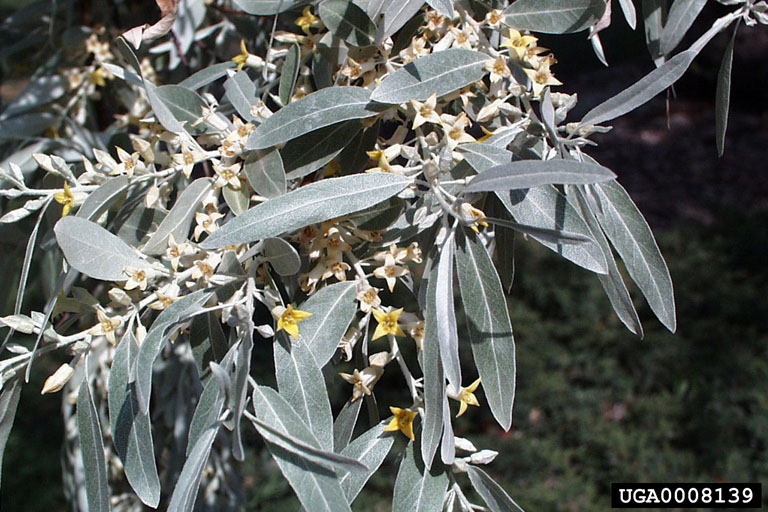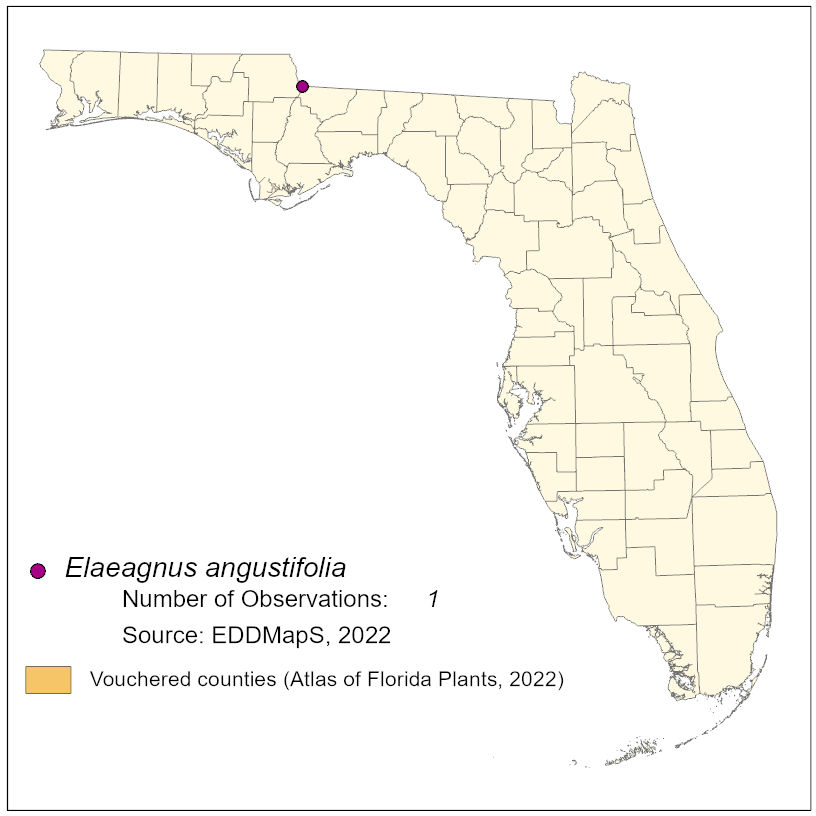Common Name: Russian olive
Family: Elaeagnaceae
Common Synonyms: none
USDA Hardiness Zone: 3a - 8b
Growth Habit: Shrub or small tree
Origin: Southern Europe and western Asia
FISC Category: -
FDACS Listed Noxious Weed: No
Introduction Date: Introduced in US late 1800's, not established in Florida
IFAS Assessment:

Large deciduous shrub or small tree to 25 m tall. Bark reddish and shredding. Leaves alternate, silver-gray, lance-shaped. Fragrant yellow flowers in leaf axils. Flowers late spring. Fruit hard, olive-like.
Riparian areas, stream banks, lake shores, prairies
Established nationwide but not yet vouchered in FL. Could be climate limited but would be good to keep out of state. Fixes nitrogen.

NA
Dave's Garden. 2013. PlantFiles: Silver Russian olive, Elaeagnus angustifolia. http://davesgarden.com/guides/pf/go/64661/. Accessed on December 9, 2013.
Katz, G.L. and Shafroth, P.B. 2003. Biology, ecology and management of Elaeagnus angustifolia L. (Russian olive) in western North America. Wetlands 23(4): 763-777.
Minnesota Department of Natural Resources (MDNR). 2013. Invasive Terrestrial Plants - Russian olive (Elaeagnus angustifolia). http://www.dnr.state.mn.us/invasives/terrestrialplants/woody/russianolive.html. Accessed on December 9, 2013.
University of Georgia - Center for Invasive Species and Ecosystem Health. 2013. BugwoodWiki: Elaeagnus angustifolia. http://wiki.bugwood.org/Elaeagnus_angustifolia. Accessed on December 9, 2013.